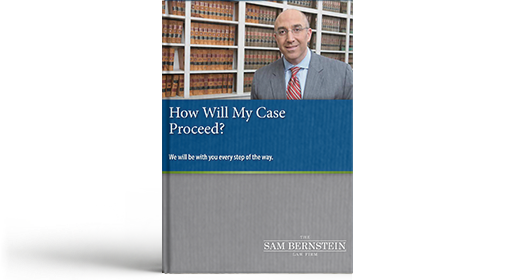FRACTURES AND BROKEN BONES INJURY LAWYERS
An accident that involves broken bones can be a traumatic and devastating experience. Call The Sam Bernstein Law Firm to get the compensation you deserve.
MICHIGAN BONE INJURY LAWYER
The most common types of bone injuries include broken bones and fractures.
When a personal injury case involves a bone injury like a broken bone or a fracture, while painful and difficult for the victim, it may help their personal injury case in that there is often irrefutable medical evidence that the injury exists.
We are Michigan's most experienced personal injury law frim with over 800 years of combined legal experience. If you or a loved one have been injured resulting in a broken bone, contact us for a free consultation today!
CAUSES OF BONE INJURIES
Bone injuries can have many different causes.
When it comes to personal injury claims, common related causes of bone injuries include slip and fall accidents, construction accidents, and car accidents. In the United States, there are more than 1 million people each year that suffer a fractured bone injury.
BROKEN BONE VERSUS FRACTURED BONE
While many people consider broken bones and fractured bones to be two distinct types of injuries, they are actually terms that essentially refer to the same injury condition. Both broken bones and fractured bones are bones that have been shattered, typically, through the use of excessive force in some form.
SIGNS AND SYMPTOMS OF A FRACTURED BONE
The first indication that you may have sustained a fractured bone in an accident is that you will notice significant pain. Most bone fractures are quite painful, particularly if you attempt to move or put weight on the injured body part. Swelling and numbness are also signs that you may have fractured a bone. Other symptoms of a fracture or broken bone include bleeding, bruising, a change in color of the skin, and a visible bone poking through your skin.
BONE INJURY TREATMENT
If you are suffering from a bone injury due to a personal injury accident, you may be wondering what the typical course of treatment is for this type of injury. You may also be wondering what your recovery time will be. When diagnosing your injury, your doctor will typically order diagnostic tests such as x-rays or MRIs to confirm that it is a broken bone or fracture, as well as to pinpoint the exact location of your injury.
The treatment you will need to recover from your bone injury depends on how you were injured, the severity of your injury, and the specific location of your injury. Bone injuries generally repair themselves by producing new bone tissue to connect the broken pieces, gradually healing the injury over time. As this new bone tissue must be protected to grow properly, your doctor will typically recommend immobilization of your injured bone using a cast or a splint.
PURSUING COMPENSATION FOR YOUR BONE INJURY
In cases where someone else is at fault for your bone injury, you may be able to pursue a personal injury case against that person or company for causing your injury. For example, if you were injured in a slip and fall accident occurring in a department store, you may have a legal claim for compensation if you are able to prove that the store was negligent in some way which caused your injury. If you or a loved one suffered a broken bone that may have been caused by the fault of another person or product, contact our personal injury attorneys as soon as possible.
MORE INFORMATION ON BROKEN BONES:
TYPES OF FRACTURES
MEDICAL PROFESSIONALS OFTEN REFER TO A FRACTURE WITH ONE OF THE FOLLOWING TERMS:
- Single Fracture: When a bone is broken in only one place
- Complete Fracture: When it is clear that the bone is broken into two separate pieces
- Bending Fracture: An unusual bend in a bone without actual cracking. This is rare but may occur in children
- Hairline Fracture: This is a thin break in a bone. The bone is not completely broken
- Greenstick Fracture: A break in a bone limited to only one side. The bone is broken, but the break does not go across the entire bone
- Comminuted Fracture: Sometimes called a shatter fracture or crushed bone fracture, in which the bone is broken into more than two pieces. Often, traumatic events like automobile accidents cause these fractures
- Open Fracture: This can result from significant trauma, such as a serious automobile collision or gunshot wound. In an open fracture, the bone penetrates the skin. Typically, this fracture requires surgery and creates a risk of infection to the bone and the area surrounding the wound
If you or a loved one suffered a broken bone that may have been caused by the fault of another person or product, contact us as soon as possible.
TREATMENT OF BROKEN BONES
Sometimes, injury victims need additional tools to help themselves get back on their feet after a bad fracture. Often people use a walking aide, like a cane, crutches, or possibly a walker. To be safe and effective, the walking aide must be the proper height and dimensions for the person using it. You should consult a physician before using one of these assistive devices, to find out the way to use it properly while recovering from injury.
For serious breaks, the most common treatment methods are Reductions and Casts.
REDUCTIONS
To treat a fracture, a physician may need to perform a "reduction." This is a procedure to line up the broken pieces of the bone and set them back into place, so that it can heal properly. After a reduction procedure, the natural regenerative aspects of the bone will bring back a solid unity to the spot of the fracture. The cells on the ends of the bones and the blood vessels cause this healing process to occur over time.
Some reductions are classified as closed reductions and others as open reductions.
A doctor performs a closed reduction and can create unity between bone pieces, without surgery.
Severe fractures, like a comminuted fracture or an open fracture, require a surgical procedure called an open reduction. The procedure often involves the placement of "hardware," such as pins, metal plates, or metal rods, to hold together the badly broken bones.
After the bones heal, the doctor may do another surgery, to remove the metal pieces. In other cases, the hardware remains in place to ensure the integrity of the injured bone.
Regardless of the type of fracture that you or a loved one may have suffered, medical science has made tremendous strides in providing treatments to minimize the damage caused.
CASTS
Casts are the most common tool used to help a fracture heal. Today, casts are made of many different types of material, including the traditional plaster variety, as well as modern materials like fiberglass. The purpose of a cast is to eliminate or reduce motions that could worsen the fracture while it is healing.
If you are wearing a cast that seems too tight or unbearably uncomfortable, consult your doctor immediately. Reflex Sympathetic Dystrophy (RSD) is a serious condition that may arise from an improperly monitored or applied cast.
When a cast comes off, it often leaves behind dry and peeling skin. The muscles in that area may appear visibly weaker, due to lack of use during the healing process. To rebuild muscle strength, seek medical advice on specific exercises that will strengthen the affected area without causing further injury to the healing bone.
If you or a loved one suffered a broken bone that may have been caused by the fault of another person or product, contact us as soon as possible.
WAYS TO KEEP YOUR BONES STRONG
Prevention is always the best tool in the battle against fractures and other serious injuries. Eat a healthy diet, exercise, and always wear seat belts when traveling in an automobile. Make certain your child wears a helmet and other protective gear when biking or roller-skating. These simple steps may provide the extra protection needed to prevent injury when the unexpected occurs.
In general, bones are resistant to fracture. Healthy bones usually have the ability to absorb the traumatic jolt of a sudden force. However, a very strong trauma or force may exceed their natural resilience and cause a fracture.
Bones are living tissue and tend to grow rapidly during childhood. After you reach maturity, it still is important to care for your bones. A balanced diet that is rich in calcium helps build and maintain healthy bones. This is especially true for women, who often suffer diminished bone strength after menopause. Check with your doctor about the best bone-healthy diet for you.
Another way to maintain the health of your bones is regular exercise. Activity builds build bone density and overall bone strength. Talk with your physician about the exercise program that is right for you.
If you or a loved one suffered a broken bone that may have been caused by the fault of another person or product, contact us as soon as possible.
Client reviews

"THEY KEPT ME UPDATED."
- Veronica, Actual Client

"I WILL BE FOREVER GRATEFUL."
- Tim, Actual Client

"I FELT LIKE I WAS A PART OF THE FAMILY"
- Terrence, Actual Client

"VERY PROFESSIONAL & KNOWLEDGEABLE"
- Sherry, Actual Client

"PASSIONATE, COMPETENT, COMMITTED"
- Actual Client

"THEY STAND BY THEIR WORD."
- Actual Client

"KIND & COMPASSIONATE"
- Nancy, Actual Client

"YOU CAN TRUST THEM 100%."
- Michael, Actual Client

"HONEST, CARING, SUPPORTIVE."
- Janice, Actual Client

"THEY TOOK PERSONAL INTEREST IN ME."
- Janice, Actual Client

"I KNEW I WAS IN GOOD HANDS"
- Jerry, Actual Client

"NUMBER ONE PERSON I'D RECOMMEND."
- Actual Client

"SAM'S GOT YOU COVERED."
- Chris, Actual Client
RECOMMENDED READING

Why Serious Injury Lawyers Are Important for You a...
UPDATE: Michigan Slip & Fall Law has changed. The inform Read more…
May 12, 2020

The Best Children’s Hospitals in Michigan...
Few things are more distressing to a parent than being told Read more…
August 12, 2019

What Are Your Rights as a Patient?...
When you are admitted to a hospital or move into a nursing h Read more…



